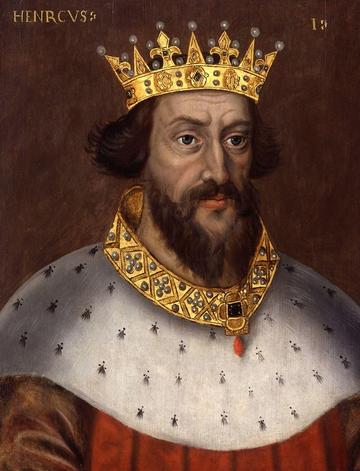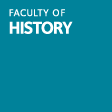Oxford Research: The Writs and Charters of Henry I
Since its foundation in the later nineteenth century, the Modern History Faculty has been one of the most important world centres for the study of medieval history. This has been reflected in undergraduate courses, library resources and the succession of imaginative and distinguished scholars of the Middle Ages who have taught and studied in Oxford from William Stubbs to Richard Southern and beyond. This tradition is maintained both in undergraduate and graduate work and in individual and collaborative research projects. Mark Hagger explains the significance of one major project funded by the Arts and Humanities Research Board under the direction of Richard Sharpe, Professor of Diplomatic.
Henry I was king of England 1100–1135 and duke of Normandy 1106–1135. By the time he celebrated Whitsunday 1110 in his hall at Windsor, he would already have become used to the pleasures and irritations of his position, and well used to dealing with those who asked for his help. Amongst those who did so, on that very day, was Abbot Richard of St Albans. He – or more likely one of his officials – negotiated terms with one of the king’s closest advisers, Nigel d’Aubigny, paid over a sum of money, and received in return an impression of the king’s seal, attached to which was a Latin writ addressed to the justice and the shire court of Northumberland and witnessed by Nigel. The writ was duly taken to Northumberland and was read aloud to the assembled court, being translated on the spot from Latin into both French and English so as to make it intelligible to the listeners. In this manner, the great and the good of distant Northumberland would be apprised of the king’s command that the monks of Tynemouth should have their court, exercising certain specified judicial privileges, and that any man who injured the monks’ interests would face a financial penalty for doing so.

King Henry I, by unknown artist.
Each writ or charter has its own tale to tell, but our apprehension of its meaning depends not only on our ability to infer the circumstances of the particular document, but also our grasp of the words used in it. Taken together, royal acta (charters and writs of various kinds) are instruments of government and administration. They range from charters of liberties for the whole nation, through grants and confirmations of property and lordship, to commands to the King’s officers in both England and Normandy; writs to ensure that no one disturbed the peaceful progress of those going to a fair, or to put a monastery in possession of a parcel of land, or to punish those who had unjustly deprived the abbot of Jumièges of a whale caught off Quillebeuf-sur-Seine. They provide the most important and direct witness to the workings of English government and the law in the period 1100–1135. Indeed, charters in general are the foundation of much fundamental work on a vast range of medieval subjects, including social structures, literacy, law, gender, and genealogy.
In view of this importance, it is regrettable that the charters and writs of King Henry I are only accessible to most researchers in a summary form. To make matters worse, this ‘calendar’ falls far below the scholarly standards expected in such work. It is incomplete, inaccurate in its description of documents, and frequently incorrect in dating them. Work has now begun to remedy this state of affairs. Supported by a substantial grant from the AHRB, and by colleagues Professor Judith Green in Belfast and Professor David Bates in London, Professor Richard Sharpe and three post-doctoral researchers in Oxford have begun the process of editing each of the 1,500 of King Henry I’s acts that survive (189 of which are the original documents, the rest in medieval or later copies). The edition will include full texts and English translations of every one of King Henry I’s acts, so as to open the documents up both to professional historians and to those studying the period but who do not have an academic background or knowledge of Latin.
Moreover, the acts will be put into context by the inclusion of introductions for every institution, family, or individual that obtained one of King Henry’s acts. This beneficiary headnote will provide the necessary background to the church or individual concerned, but it will also focus on the routes by which the documents themselves have reached us. Almost all the acta still known were preserved through the archive of the beneficiary, and the headnote must consider whether the archive reflects distinct choices in the obtaining of the king’s acts or in selecting documents to preserve.
The interests and circumstances of the beneficiary also determine whether a particular archive was increased by the contemporary or later forging of false documents in the name of Henry I, which must be detected and examined. Each of the acts will be annotated, setting out the contextual information on government and local affairs essential to the interpretation of the documents. It will therefore allow more informed use of the texts than has previously been possible. It will also heighten the flexibility of the edition, making it a useful reference tool, rather than simply an undigested heap of texts. This is something of a novelty in work of this kind, where the documents are usually presented with a bare minimum of contextual material and without discussion.
In addition, it is intended to make the documents as accessible as possible by providing appropriate indexes and tables, integrating the chronicle evidence and the place of issue of each document, constructing the King’s itinerary in tabular form as a framework for dating as many documents as possible, and providing an enhanced index of persons with potted biographies and tables showing individuals’ participation in Henry’s acta as royal official, beneficiary, or witness.
The texts of all Henry I’s known acts had already been gathered together and entered into a database, along with the acta of William I, William II and Stephen (covering in sum the period 1066–1154), as a project funded by the Aurelius Trust in 2001–2. This database allows the evolving characteristics of different forms of documents over the period to be observed, because it comprises documents from a generation before and a generation after the period now under examination, and because its structure allows one to select and view documents from both a royal and a beneficiary perspective.
It allows greater scope than has been possible hitherto in finding other specimens of documents that use a particular form of words, to see easily whether the form is shared with documents for other beneficiaries or not, and over what period. The working method to be adopted in this edition, based on the existing database, will allow us to learn very much more about the developing form and style of the charters than has previously been possible. It provides an opportunity to demonstrate how analysis can be pushed further, providing a means for allowing other historians to improve their skills at using diplomatic evidence.
The project will continue over the next three years. It will conclude with the publication of the complete edition of the writs and charters of Henry I by the Oxford University Press, in six volumes, along with a volume containing the fully-edited acta of King William II (also edited by Professor Sharpe with funding from the University’s own Research Development Fund and the British Academy), and a supplementary volume containing the index of persons and king’s itinerary. It is hoped that the textual database will also be released. Beyond this, Professor Sharpe will prepare a monograph synthesizing what can be learnt about the evolution of English royal diplomatic practice in the eleventh and early twelfth centuries. Other collaborators will write supplementary studies on historical and diplomatic matters relating to the edition, to be collected as a companion volume.
- Mark Haggar



